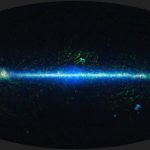Key Takeaways:
- Explore the Arctic’s captivating celestial phenomena beyond the Aurora Borealis.
- Kiruna, at the 66th latitude north, offers exceptional stargazing experiences due to minimal light pollution.
- Witness the enchanting polar night, or Kaamos, characterized by pastel and deep-blue hues.
- Embrace the unique experience of experiencing dusk and dawn within hours during the end of the Polar Night.
- Discover the early appearance of the Northern Lights in September, amidst vibrant autumnal landscapes.
Arctic wonders extend far beyond the renowned Aurora Borealis. Kiruna, located on the 66th latitude north, emerges as an optimal spot for celestial enthusiasts. Its status as Europe’s scientific space research hub, along with NASA’s endorsement, solidifies it as the premier destination for witnessing the Northern Lights. Yet, the allure of Kiruna lies not only in the luminous spectacle above, but also in the quiet embrace of the surrounding forest.
The polar night, or Kaamos, offers a mesmerizing contrast to the midnight sun. During winter, when the sun barely graces the horizon, Kiruna unveils a spectacular display of pastel violets, oranges, and pinks, culminating in the ethereal polar twilight. This enchanting phenomenon occurs in December and early January, heralding a transformation of the famed Icehotel.
Venturing further, the Arctic offers the unique experience of experiencing both dusk and dawn within a few short hours. As the Polar Night recedes, clear, concise days unfold, perfect for embarking on dog sledding or riding Icelandics into the evocative 2 pm sunset.
September brings a hidden gem – the early appearance of the Northern Lights amidst a tapestry of golden, orange, and red forest foliage. Guided torch-lit hikes and photography classes in the woodlands around Jukkasjärvi offer an intimate encounter with this natural marvel. The Sauna Ritual, a Nordic tradition, adds an extra layer of enchantment. After a wood-fired sauna, a brisk river plunge, and cocooning in a robe, guests can recline on reindeer-clad benches, hoping for a glimpse of the elusive Aurora.
Finally, from May to July, a unique phenomenon engulfs the region. The Earth’s axial tilt bestows 24-hour sunshine north of the Arctic Circle, famously known as the midnight sun. This period offers a chance for extraordinary experiences like river rafting or hiking under the warm, perpetual golden glow – an opportunity that beckons adventurers for a once-in-a-lifetime encounter with nature’s brilliance.
Author: Science & Astronomy
#1

#2

#3

#4

#5

#6

#7

#8

#9

#10



